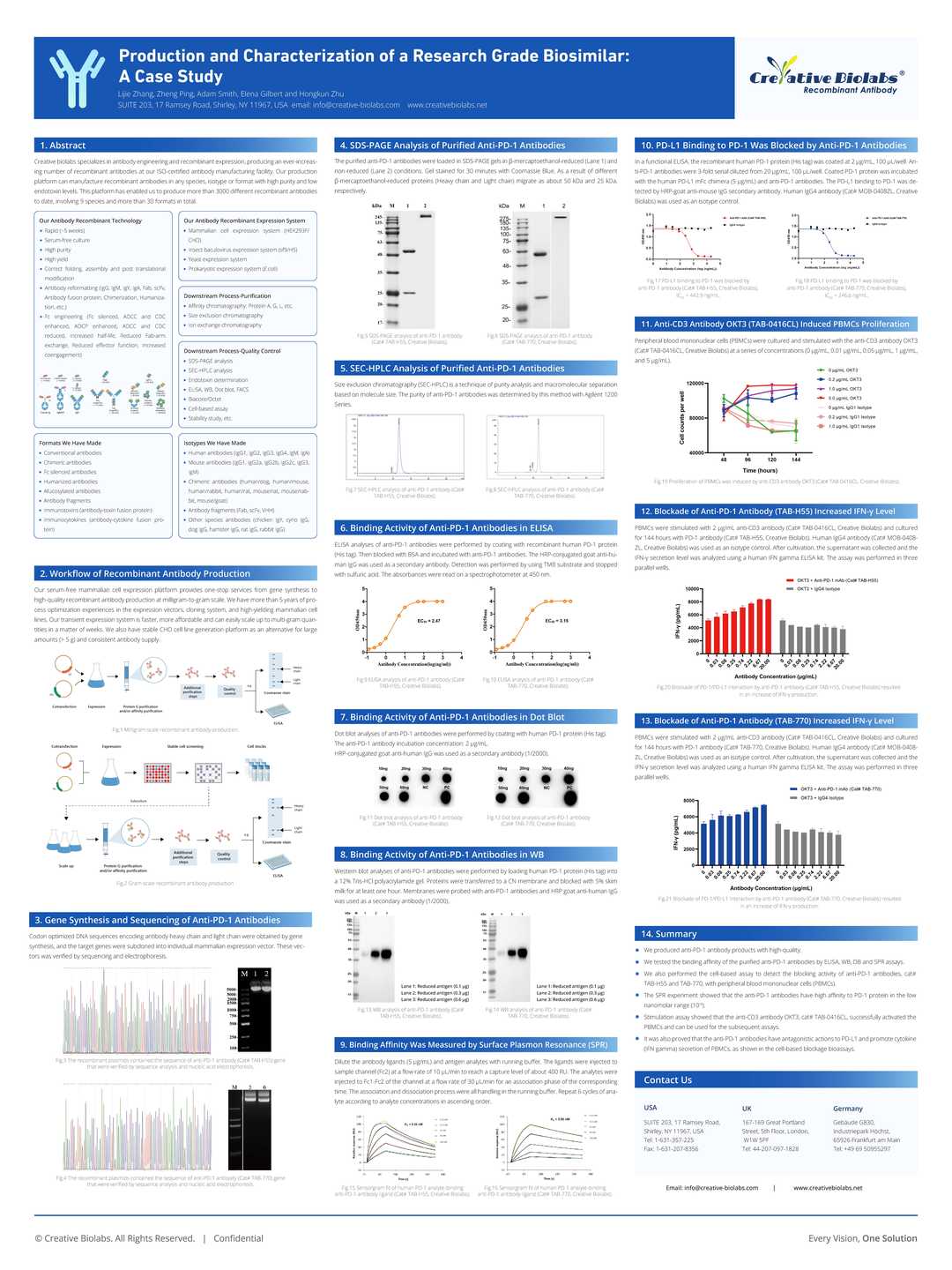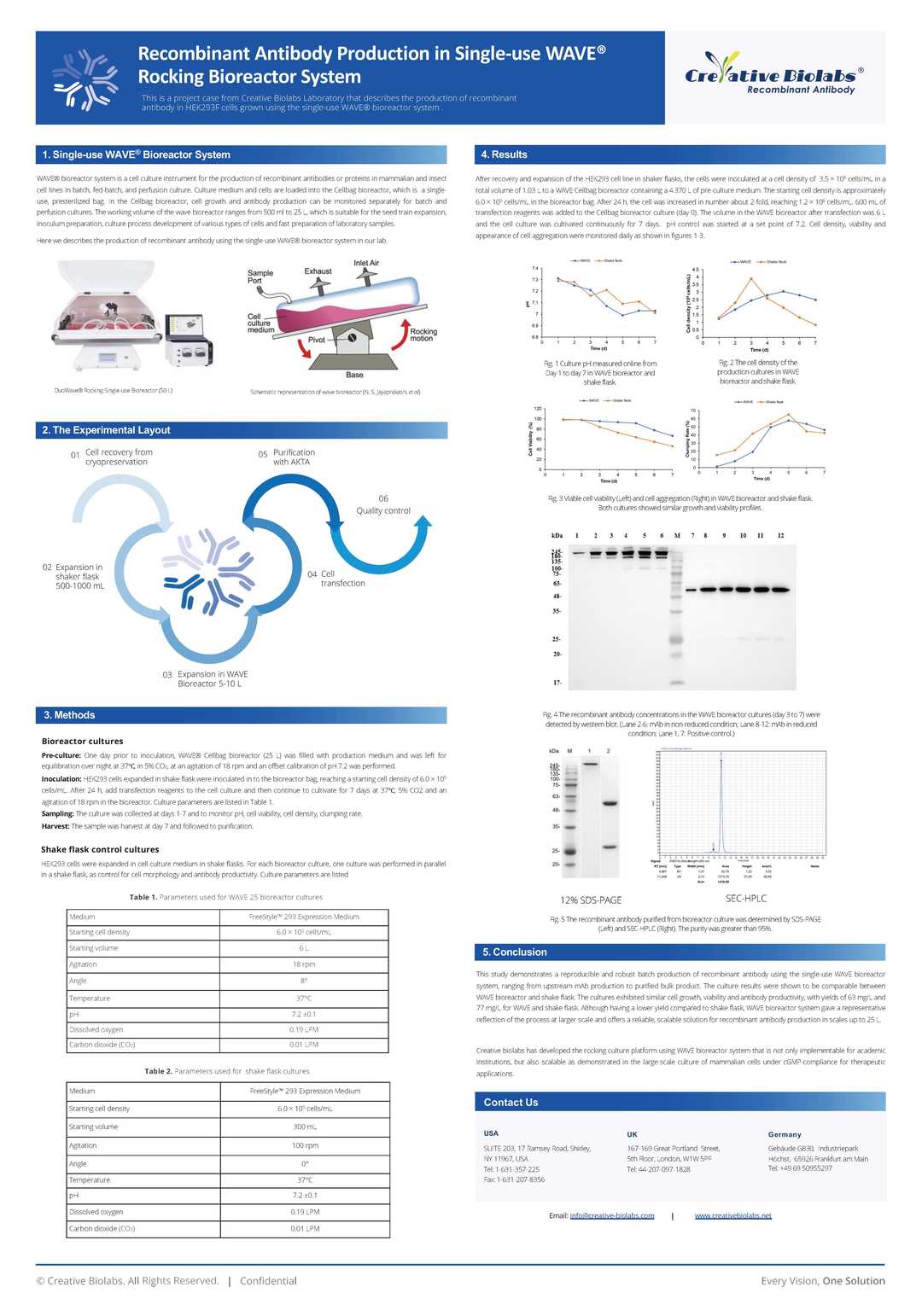Anti-Human ErbB2 Recombinant Antibody (TAB-005)
CAT#: TAB-005
Recombinant monoclonal antibody to Human ErbB2. The antibody is a monoclonal antibody that interferes with the HER2/neu receptor. Its main use is to treat certain breast cancers.
The HER receptors are proteins that are embedded in the cell membrane and communicate molecular signals from outside the cell (molecules called EGFs) to inside the cell, and turn genes on and off. The HER proteins stimulate cell proliferation. In some cancers, notably certain types of breast cancer, HER2 is over-expressed, and causes cancer cells to reproduce uncontrollably.













Specifications
- Immunogen
- NIH 3T3/HER2-3400 cells are used to immunize BALB/c mice.
- Host Species
- Mouse
- Derivation
- Humanized (from mouse)
- Type
- IgG1 - kappa
- Specificity
- Tested positive against native human antigen
- Species Reactivity
- Human
- Applications
- FC, IP, ELISA, Neut, FuncS, IF, IHC
- MW
- 145,531.5 g/mol
- Related Disease
- Breast cancers overexpressing ERBB2, metastatic
Product Property
- Purity
- >95.0% as determined by Analysis by RP-HPLC & analysis by SDS-PAGE.
- Storage
- 4°C. For long term storage, aliquot and store at -20°C. Repeated thawing and freezing must be avoided.
Applications
- Application Notes
- The ERBB2 antibody has been reported in applications of WB, Inhib, IP, H&E staining, IF, Internalization, ADCC.
WB: Protein samples lysed in Laemmlli sample buffer and were then boiled for 5 min. Equal quantities of protein lysates were then analyzed on SDS-PAGE and transferred to PVDF membrane. The membranes were blocked with 10% skim milk, incubated with primary antibody in 0.4% skim milk/TBS for 2h, washed with TBST followed by appropriate secondary antibody in 0.4% skim milk/TBS incubation for 1 h. The proteins were visualized using Western lighting plus-ECL reagent in Light-Capture II cooled CCD camera system.
IF: For confocal microscopic observation, SKBR-3 cells and caveolin-1 transfected SKBR-3 cells were grown on 18 mm cover slips. Cells were then fixed with 4% PFA for 10 min, permeabilized with 0.1% Triton X-100/PBS and blocked with 1% BSA-PBS for 30 min at RT. For caveolin-1 localization, cells were incubated with 1:500 diluted anti-caveolin-1 antibody in 0.25% BSA/PBS for 1 h at RT, followed by staining with Alexa 555 labeled anti-rabbit IgG for 30 min. After wash, the cover slips were mounted with DAPI (Vector Laboratories and observed by confocal microscope IX81 with 60x magnification lens.
ADCC: Caveolin-1 expressing and wild type SKBR-3 and SKOV-3 cells that had been cultured in 96 well plates were incubated with 1 µM of EC-Fc and Trastuzumab for 4 h at 37˚C.
Target
- Alternative Names
- Erb-B2 Receptor Tyrosine Kinase 2; V-Erb-B2 Avian Erythroblastic Leukemia Viral Oncogene Homolog 2; Tyrosine Kinase-Type Cell Surface Receptor HER2; Neuro/Glioblastoma Derived Oncogene Homolog; Human Epidermal Growth Factor Receptor 2; Metastatic Lymph Node Gene 19 Protein; Proto-Oncogene C-ErbB-2; Proto-Oncogene Neu; EC 2.7.10.1; P185erbB2; MLN 19; HER2; NGL; NEU; V-Erb-B2 Avian Erythroblastic Leukemia Viral Oncogene Homolog 2 (Neuro/Glioblastoma Derived Oncogene Homolog)
- Gene ID
- 2064
- UniProt ID
- P04626
Customer Review
There are currently no Customer reviews or questions for TAB-005. Click the button above to contact us or submit your feedback about this product.


Q&As
-
I'm looking for an antibody for functional studies on ErbB2. Is TAB-005 suitable?
A: Yes, this antibody (TAB-005) is listed for use in Functional Studies (FuncS). It is a recombinant, humanized IgG1 antibody that targets human ErbB2 (also known as HER2). It is expressed in CHO cells with a purity>95% by SDS-PAGE, making it a high-quality reagent suitable for functional research applications, in addition to ELISA, FC, and IF.
-
What is the derivation of this anti-ErbB2 antibody?
A: This is an engineered recombinant antibody. It is specified as a humanized antibody, which typically means the antigen-binding loops from a non-human antibody (like mouse) were grafted onto a human IgG1 framework. This format is often used in research to improve compatibility with human-derived samples or assay components.
View the frequently asked questions answered by Creative Biolabs Support.
Cite This Product
To accurately reference this product in your publication, please use the following citation information:
(Creative Biolabs Cat# TAB-005, RRID: AB_3111733)
Submit Your Publication
Published with our product? Submit your paper and receive a 10% discount on your next order! Share your research to earn exclusive rewards.
Publications
Peer-reviewed PublicationsOur products have been used extensively by scientists all over the world to accelerate their life science research. Here, we present a collection of publications that cite this product.
Related Diseases
Related Signaling Pathways
Downloadable Resources
Download resources about recombinant antibody development and antibody engineering to boost your research.
Product Notes
This is a product of Creative Biolabs' Hi-Affi™ recombinant antibody portfolio, which has several benefits including:
• Increased sensitivity
• Confirmed specificity
• High repeatability
• Excellent batch-to-batch consistency
• Sustainable supply
• Animal-free production
See more details about Hi-Affi™ recombinant antibody benefits.
Datasheet
MSDS
COA
Certificate of Analysis LookupTo download a Certificate of Analysis, please enter a lot number in the search box below. Note: Certificate of Analysis not available for kit components.
Protocol & Troubleshooting
We have outlined the assay protocols, covering reagents, solutions, procedures, and troubleshooting tips for common issues in order to better assist clients in conducting experiments with our products. View the full list of Protocol & Troubleshooting.
See other products for "ERBB2"
Select a product category from the dropdown menu below to view related products.
| CAT | Product Name | Application | Type |
|---|---|---|---|
| NABG-059 | Recombinant Anti-Human ERBB2 VHH Single Domain Antibody | IHC, FC, CA, FuncS | Llama VHH |
| CAT | Product Name | Application | Type |
|---|---|---|---|
| IAB-B008(A) | Recombinant Anti-human ERBB2 Intrabody [(D-Arg)9] | IF, FC, FuncS | scFv-(D-Arg)9 |
| CAT | Product Name | Application | Type |
|---|---|---|---|
| IAB-B008(G) | Recombinant Anti-human ERBB2 Intrabody [+36 GFP] | WB, ICC, FuncS | scFv-(+36GFP) |
| CAT | Product Name | Application | Type |
|---|---|---|---|
| IAB-B008(T) | Recombinant Anti-human ERBB2 Intrabody [Tat] | ICC, Neut, FuncS | scFv-Tat |
| CAT | Product Name | Application | Type |
|---|---|---|---|
| TAB-761 | Anti-ERBB2 Recombinant Antibody (Margetuximab) | IF, IP, Neut, FuncS, ELISA, FC, WB | IgG1 - kappa |
| CAT | Product Name | Application | Type |
|---|---|---|---|
| TAB-H70 | Anti-Human ERBB2 Recombinant Antibody (TAB-H70) | ELISA, IP, FC, FuncS, Neut, IF, ICC | IgG1 - kappa |
| CAT | Product Name | Application | Type |
|---|---|---|---|
| TAB-053 | Anti-Human ERBB2 Recombinant Antibody (TAB-053) | FuncS, IF, Neut, ELISA, FC, IP, WB | IgG1 - kappa |
| CAT | Product Name | Application | Type |
|---|---|---|---|
| AGTO-G022E | Anti-ERBB2 immunotoxin 4D5 (scFv)-PE | Cytotoxicity assay, Function study |
| CAT | Product Name | Application | Type |
|---|---|---|---|
| AGTO-G022D | Anti-ERBB2 immunotoxin 4D5 (scFv)-DT | Cytotoxicity assay, Function study |
| CAT | Product Name | Application | Type |
|---|---|---|---|
| AGTO-G022G | Anti-ERBB2 immunotoxin 4D5 (scFv)-Gel | Cytotoxicity assay, Function study |
| CAT | Product Name | Application | Type |
|---|---|---|---|
| AGTO-G022R | Anti-ERBB2 immunotoxin 4D5 (scFv)-RTA | Cytotoxicity assay, Function study |
| CAT | Product Name | Application | Type |
|---|---|---|---|
| AGTO-G022S | Anti-ERBB2 immunotoxin 4D5 (scFv)-Sap | Cytotoxicity assay, Function study |
| CAT | Product Name | Application | Type |
|---|---|---|---|
| PABL-085 | Human Anti-ERBB2 Recombinant Antibody (PABL-085) | ELISA, WB, FuncS | Human IgG |
| CAT | Product Name | Application | Type |
|---|---|---|---|
| PABL-126 | Human Anti-ERBB2 Recombinant Antibody (PABL-126) | ELISA, WB, FuncS | Human IgG |
| CAT | Product Name | Application | Type |
|---|---|---|---|
| PSBL-085 | Human Anti-ERBB2 Recombinant Antibody; scFv Fragment (PSBL-085) | ELISA, WB, FuncS | Human scFv |
| CAT | Product Name | Application | Type |
|---|---|---|---|
| PSBL-126 | Human Anti-ERBB2 Recombinant Antibody; scFv Fragment (PSBL-126) | ELISA, WB, FuncS | Human scFv |
| CAT | Product Name | Application | Type |
|---|---|---|---|
| PFBL-085 | Human Anti-ERBB2 Recombinant Antibody (PFBL-085) | ELISA, WB, FuncS | Human Fab |
| CAT | Product Name | Application | Type |
|---|---|---|---|
| PFBL-126 | Human Anti-ERBB2 Recombinant Antibody; Fab Fragment (PFBL-126) | ELISA, WB, FuncS | Human Fab |
| CAT | Product Name | Application | Type |
|---|---|---|---|
| PNBL-066 | Recombinant Anti-HER2 VHH Single Domain Antibody (PNBL-066) | SPR | Llama VHH |
| CAT | Product Name | Application | Type |
|---|---|---|---|
| PNBL-067 | Recombinant Anti-HER2 VHH Single Domain Antibody (PNBL-067) | SPR | Llama VHH |
| CAT | Product Name | Application | Type |
|---|---|---|---|
| PNBL-069 | Recombinant Anti-HER2 VHH Single Domain Antibody (PNBL-069) | ELISA | Llama VHH |
| CAT | Product Name | Application | Type |
|---|---|---|---|
| PABZ-041 | Human Anti-ERBB2 Recombinant Antibody (clone bH1) | WB, IF, FuncS | Human IgG |
| CAT | Product Name | Application | Type |
|---|---|---|---|
| PABC-089 | Mouse Anti-ERBB2 Recombinant Antibody (clone A21) | ELISA, WB, FC | Mouse IgG |
| CAT | Product Name | Application | Type |
|---|---|---|---|
| PABL-466 | Human Anti-ERBB2 Recombinant Antibody (clone mAb37) | WB | Human IgG |
| CAT | Product Name | Application | Type |
|---|---|---|---|
| PFBZ-041 | Human Anti-ERBB2 Recombinant Antibody (clone bH1); Fab Fragment | WB, IF, FuncS | Human Fab |
| CAT | Product Name | Application | Type |
|---|---|---|---|
| PFBC-089 | Mouse Anti-ERBB2 Recombinant Antibody (clone A21); Fab Fragment | ELISA, WB, FC | Mouse Fab |
| CAT | Product Name | Application | Type |
|---|---|---|---|
| PFBL-463 | Human Anti-ERBB2 Recombinant Antibody Fab Fragment (PFBL-463) | WB | Human Fab |
| CAT | Product Name | Application | Type |
|---|---|---|---|
| PFBW-161 | Mouse Anti-ERBB2 Recombinant Antibody (clone chA21); Fab Fragment | FC, WB | Mouse Fab |
| CAT | Product Name | Application | Type |
|---|---|---|---|
| PSBZ-041 | Human Anti-ERBB2 Recombinant Antibody (clone bH1); scFv Fragment | WB, IF, FuncS | Human scFv |
| CAT | Product Name | Application | Type |
|---|---|---|---|
| PSBC-089 | Mouse Anti-ERBB2 Recombinant Antibody (clone A21); scFv Fragment | ELISA, WB, FC | Mouse scFv |
| CAT | Product Name | Application | Type |
|---|---|---|---|
| TAB-0191CL | Human Anti-ERBB2 Recombinant Antibody (TAB-0191CL) | ELISA, Cyt, Internalization | Human IgG |
| CAT | Product Name | Application | Type |
|---|---|---|---|
| TAB-0192CL | Human Anti-ERBB2 Recombinant Antibody (TAB-0192CL) | ELISA, ADCC, Cyt, Internalization | Human IgG |
| CAT | Product Name | Application | Type |
|---|---|---|---|
| TAB-0193CL | Human Anti-ERBB2 Recombinant Antibody (TAB-0193CL) | ELISA, ADCC, Cyt, Internalization | Human IgG |
| CAT | Product Name | Application | Type |
|---|---|---|---|
| TAB-0194CL | Human Anti-ERBB2 Recombinant Antibody (TAB-0194CL) | ELISA, ADCC, Cyt, Internalization | Human IgG |
| CAT | Product Name | Application | Type |
|---|---|---|---|
| TAB-0191CL-S(P) | Human Anti-ERBB2 Recombinant Antibody; scFv Fragment (TAB-0191CL-S(P)) | ELISA, Cyt, Internalization | Human scFv |
| CAT | Product Name | Application | Type |
|---|---|---|---|
| TAB-033CT | Human Anti-ERBB2 Recombinant Antibody (TAB-033CT) | ELISA, WB | Human IgG1, κ |
| CAT | Product Name | Application | Type |
|---|---|---|---|
| TAB-034CT | Anti-Human HER2/neu Recombinant Antibody (TAB-034CT) | WB |
| CAT | Product Name | Application | Type |
|---|---|---|---|
| TAB-036CT | Anti-Human HER2/neu Recombinant Antibody (6B2) | ELISA, WB |
| CAT | Product Name | Application | Type |
|---|---|---|---|
| TAB-037CT | Anti-Human HER2/neu Recombinant Antibody (7C2) | ELISA, WB |
| CAT | Product Name | Application | Type |
|---|---|---|---|
| TAB-038CT | Human Anti-ERBB2 Recombinant Antibody (TAB-038CT) | FuncS, FC | Humanized IgG1 |
| CAT | Product Name | Application | Type |
|---|---|---|---|
| TAB-039CT | Anti-Human HER2/neu Recombinant Antibody (h1E11) | WB | Humanized antibody |
| CAT | Product Name | Application | Type |
|---|---|---|---|
| TAB-049CT | Anti-Human HER2/neu Recombinant Antibody (ChA21) | IHC, Inhib, WB, Activ, FC | Chimeric antibody (mouse/human) |
| CAT | Product Name | Application | Type |
|---|---|---|---|
| TAB-034CT-S(P) | Anti-Human HER2/neu Recombinant Antibody scFv Fragment (TAB-034CT-S(P)) | WB |
| CAT | Product Name | Application | Type |
|---|---|---|---|
| TAB-036CT-S(P) | Anti-Human HER2/neu Recombinant Antibody scFv Fragment (6B2) | ELISA, WB |
| CAT | Product Name | Application | Type |
|---|---|---|---|
| TAB-049CT-S(P) | Anti-Human HER2/neu Recombinant Antibody scFv Fragment (ChA21) | WB | Chimeric antibody (mouse/human) |
| CAT | Product Name | Application | Type |
|---|---|---|---|
| TAB-049CT-F(E) | Anti-Human HER2/neu Recombinant Antibody Fab Fragment (ChA21) | WB | Chimeric antibody (mouse/human) |
| CAT | Product Name | Application | Type |
|---|---|---|---|
| TAB-032CT | Anti-Human HER2/neu Single Domain Antibody, Research Grade Biosimilar | WB | Single domain antibody |
| CAT | Product Name | Application | Type |
|---|---|---|---|
| Gly-024LC | Recombinant Anti-Human ERBB2 Antibody (Fab glycosylation) | ELISA | Mouse antibody |
| CAT | Product Name | Application | Type |
|---|---|---|---|
| Gly-117LC | Recombinant Anti-Human ERBB2 Antibody (Fc glycosylation) | ELISA | Humanized antibody |
| Gly-145LC | Recombinant Anti-Human ERBB2 Antibody (Fc glycosylation) | ELISA | Human antibody |
| Gly-146LC | Recombinant Anti-Human ERBB2 Antibody (Fc glycosylation) | ELISA | Human antibody |
| Gly-147LC | Recombinant Anti-Human ERBB2 Antibody (Fc glycosylation) | ELISA | Human antibody |
| Gly-148LC | Recombinant Anti-Human ERBB2 Antibody (Fc glycosylation) | ELISA | Human antibody |
| CAT | Product Name | Application | Type |
|---|---|---|---|
| Gly-177LC | Recombinant Anti-Human ERBB2 Antibody (Non-glycosylated) | ELISA | Humanized antibody |
| CAT | Product Name | Application | Type |
|---|---|---|---|
| BRD-0195MZ | Chicken Anti-ERBB2 Polyclonal IgY | WB | Chicken antibody |
| CAT | Product Name | Application | Type |
|---|---|---|---|
| MHC-LC004 | PE-A*02:01/Human Her-2/neu E75 (KIFGSLAFL) MHC Tetramer | FCM |
| CAT | Product Name | Application | Type |
|---|---|---|---|
| MHC-LC005 | APC-A*02:01/Human Her-2/neu E75 (KIFGSLAFL) MHC Tetramer | FCM |
| CAT | Product Name | Application | Type |
|---|---|---|---|
| MHC-LC006 | BV421-A*02:01/Human Her-2/neu E75 (KIFGSLAFL) MHC Tetramer | FCM |
| CAT | Product Name | Application | Type |
|---|---|---|---|
| MHC-LC007 | PE-A*02:01/Human Her-2/neu (RLLQETELV) MHC Tetramer | FCM |
| CAT | Product Name | Application | Type |
|---|---|---|---|
| MHC-LC008 | APC-A*02:01/Human Her-2/neu (RLLQETELV) MHC Tetramer | FCM |
| CAT | Product Name | Application | Type |
|---|---|---|---|
| NEUT-737CQ | Mouse Anti-ERBB2 Recombinant Antibody (clone 7.16.4) | Block, IP, IF, FC | Mouse IgG2a |
| CAT | Product Name | Application | Type |
|---|---|---|---|
| MOR-1178 | Hi-Affi™ Rabbit Anti-ERBB2 Recombinant Antibody (clone DS1178AB) | IHC-P, IHC-Fr | Rabbit IgG |
| CAT | Product Name | Application | Type |
|---|---|---|---|
| MOR-4586 | Hi-Affi™ Rabbit Anti-ERBB2 Recombinant Antibody (clone TH99DS) | WB | Rabbit IgG |
| CAT | Product Name | Application | Type |
|---|---|---|---|
| MOR-4587 | Hi-Affi™ Rabbit Anti-ERBB2 Recombinant Antibody (clone TH100DS) | WB | Rabbit IgG |
| CAT | Product Name | Application | Type |
|---|---|---|---|
| AFC-TAB-468CQ | Afuco™ Anti-ERBB2 ADCC Recombinant Antibody, ADCC Enhanced (AFC-TAB-468CQ) | ELISA, IHC, FC, IP, IF, FuncS | ADCC enhanced antibody |
| CAT | Product Name | Application | Type |
|---|---|---|---|
| AFC-TAB-053 | Afuco™ Anti-ERBB2 ADCC Recombinant Antibody, ADCC Enhanced (AFC-TAB-053) | FuncS, IF, Neut, ELISA, FC, IP | ADCC enhanced antibody |
| CAT | Product Name | Application | Type |
|---|---|---|---|
| AFC-TAB-761 | Afuco™ Anti-ERBB2 ADCC Recombinant Antibody, ADCC Enhanced (AFC-TAB-761) | IF, IP, Neut, FuncS, ELISA, FC | ADCC enhanced antibody |
| CAT | Product Name | Application | Type |
|---|---|---|---|
| AFC-TAB-005 | Afuco™ Anti-ERBB2 ADCC Recombinant Antibody, ADCC Enhanced (AFC-TAB-005) | FC, IP, ELISA, Neut, FuncS, IF | ADCC enhanced antibody |
| CAT | Product Name | Application | Type |
|---|---|---|---|
| VS-0424-XY91 | AbPlus™ Anti-ERBB2 Magnetic Beads (3.F2) | IP, Protein Purification |
| CAT | Product Name | Application | Type |
|---|---|---|---|
| VS-0724-YC1516 | AbPlus™ Anti-Erbb2 Magnetic Beads (VS-0724-YC1516) | IP, Protein Purification |
| CAT | Product Name | Application | Type |
|---|---|---|---|
| VS-0125-FY24 | Human Anti-ERBB2 (clone 1.18.1) scFv-Fc Chimera | FC, BI | Human IgG1, scFv-Fc |
| CAT | Product Name | Application | Type |
|---|---|---|---|
| VS-0225-XY108 | CytoStream™ Mouse Anti-ERBB2 Recombinant Antibody (clone 24D2) | FC | Mouse IgG1, kappa |
| CAT | Product Name | Application | Type |
|---|---|---|---|
| VS-0425-YC430 | Recombinant Anti-ERBB2 Vesicular Antibody, EV Displayed (VS-0425-YC430) | ELISA, FC, Neut, Cell-uptake |
| CAT | Product Name | Application | Type |
|---|---|---|---|
| VS-0525-XY2335 | Anti-ERBB2 Immunohistochemistry Kit | IHC |
| CAT | Product Name | Application | Type |
|---|---|---|---|
| VS-0525-XY2336 | Anti-Mouse ERBB2 Immunohistochemistry Kit | IHC |
| CAT | Product Name | Application | Type |
|---|---|---|---|
| VS-0525-YC3 | Recombinant Anti-ERBB2 Biparatopic Antibody, Symmetric scFv-Fab | ELISA | Symmetric scFv-Fab |
| CAT | Product Name | Application | Type |
|---|---|---|---|
| VS-0525-YC6 | Recombinant Anti-ERBB2 Biparatopic Antibody, Asymmetric hetero Fab | ELISA | Asymmetric hetero Fab |
| CAT | Product Name | Application | Type |
|---|---|---|---|
| VS-0525-YC7 | Recombinant Anti-ERBB2 Biparatopic Antibody, Asymmetric hetero HC-LC | ELISA, Inhib | Asymmetric hetero HC, common LC |
| CAT | Product Name | Application | Type |
|---|---|---|---|
| VS-0825-YC22 | SmartAb™ Recombinant Anti-ERBB2 pH-dependent Antibody (VS-0825-YC22) | IF, Neut, ELISA, FC, IP, WB | Human IgG1 kappa |
| CAT | Product Name | Application | Type |
|---|---|---|---|
| VS-0825-YC24 | SmartAb™ Recombinant Anti-ERBB2 pH-dependent Antibody (Clone bH1) | WB, IF | Human IgG |
| CAT | Product Name | Application | Type |
|---|---|---|---|
| VS-0825-YC117 | SmartAb™ Recombinant Anti-ERBB2 pH-dependent Antibody (VS-0825-YC117) | FC, IP, ELISA, Neut, IF, IHC | Human IgG1 kappa |
| CAT | Product Name | Application | Type |
|---|---|---|---|
| VS-1025-YC2 | Anti-ERBB2 Antibody Prodrug, Protease Activated (VS-1025-YC2) | ISZ, Cyt, FuncS |
| CAT | Product Name | Application | Type |
|---|---|---|---|
| VS-1025-YC19 | Anti-ERBB2 Antibody Prodrug, Protease Activated (VS-1025-YC19) | ISZ, Cyt, FuncS |
Popular Products

Application: IP, IF, FuncS, FC, Neut, ELISA, ICC

Application: ELISA, Neut, IF, IP, FC, FuncS

Application: IP, IF, FuncS, FC, Neut, ELISA, IHC

Application: WB, ELISA, FC, IHC, IP

Application: WB, ELISA, Neut, FuncS

Application: ELISA, IHC, FC, IP, IF, Inhib

Application: Neut, ELISA, IF, IP, FuncS, FC
For research use only. Not intended for any clinical use. No products from Creative Biolabs may be resold, modified for resale or used to manufacture commercial products without prior written approval from Creative Biolabs.
This site is protected by reCAPTCHA and the Google Privacy Policy and Terms of Service apply.
















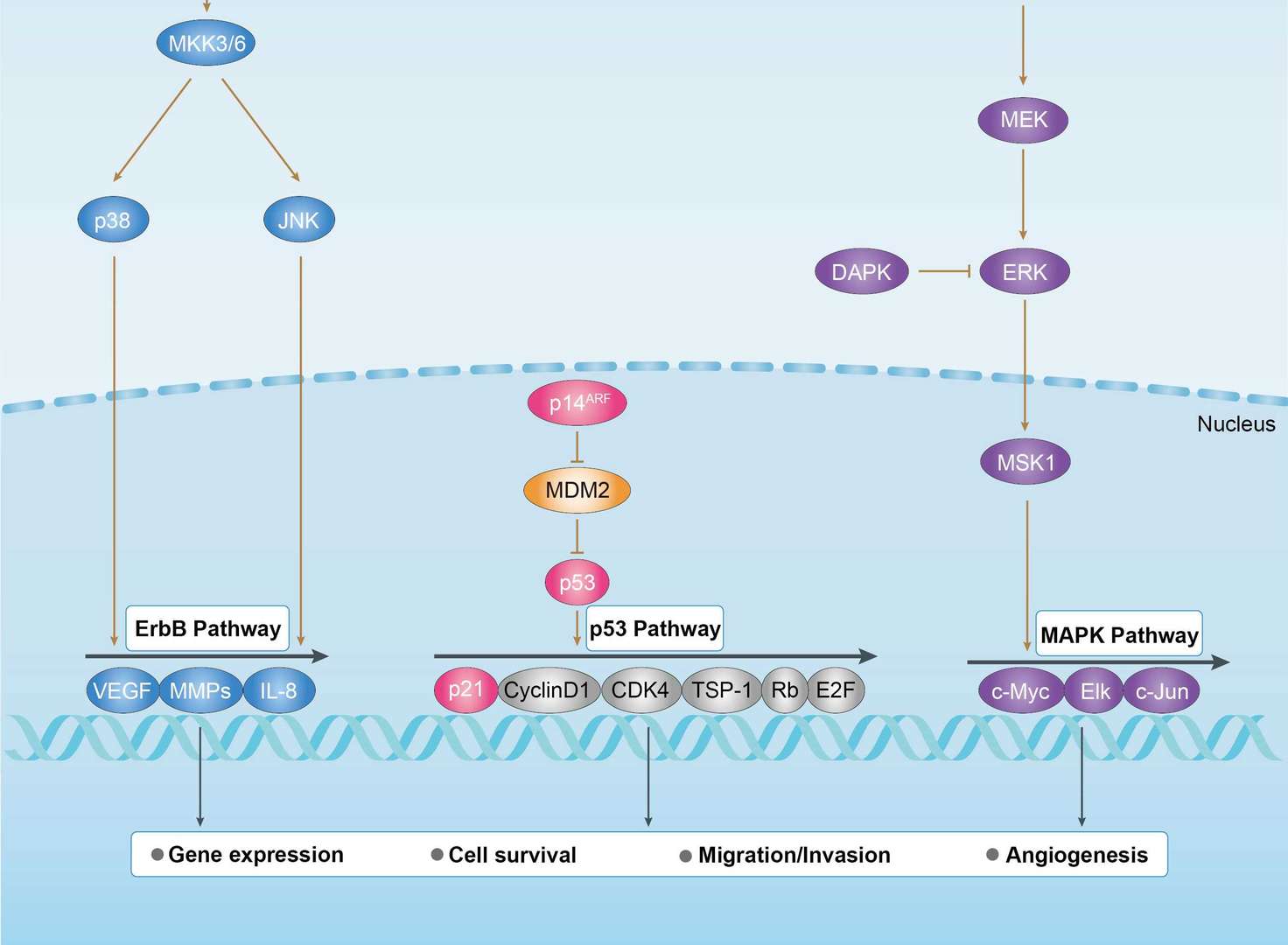 Bladder Cancer
Bladder Cancer
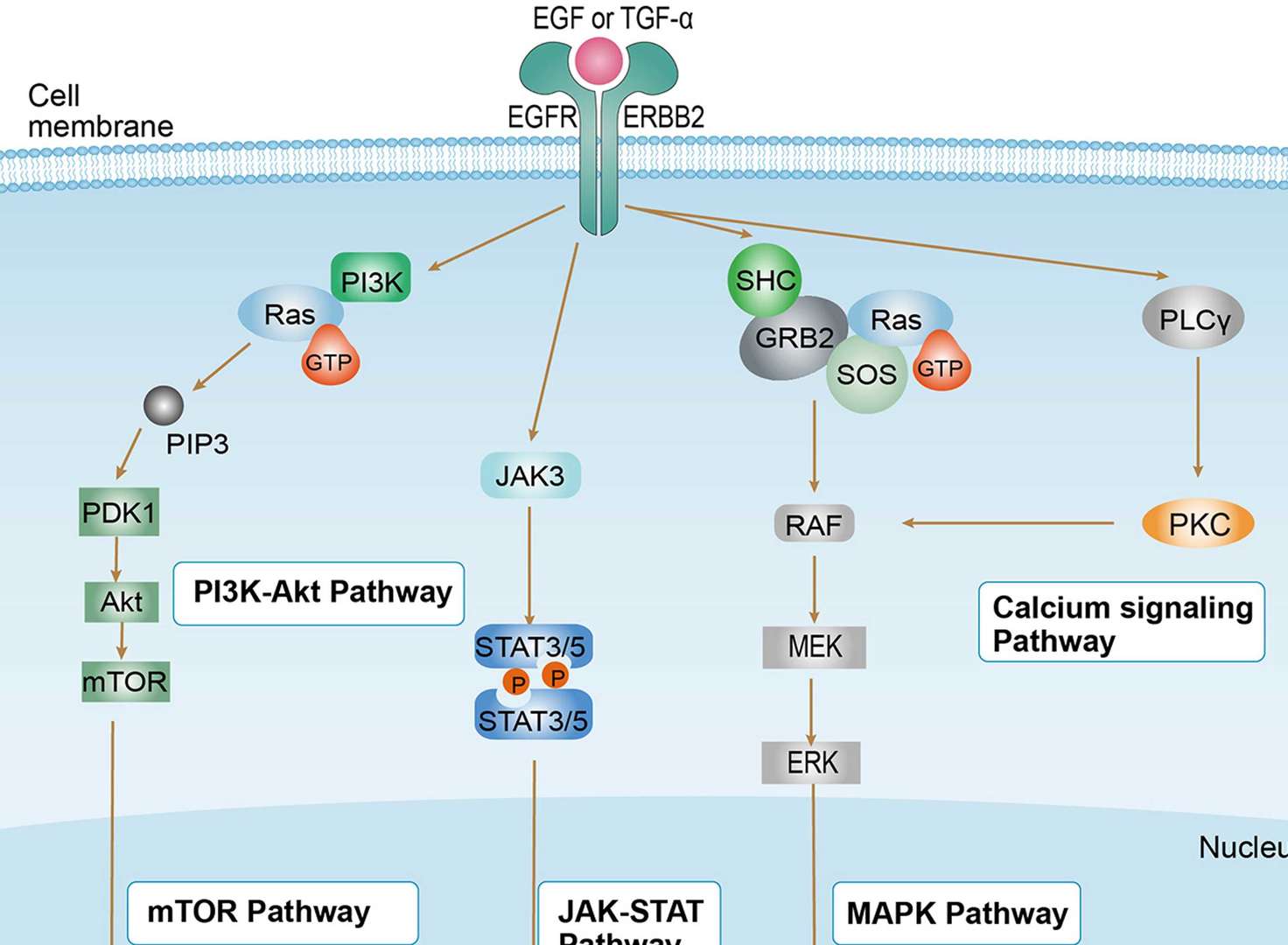 Non-small Cell Lung Cancer
Non-small Cell Lung Cancer
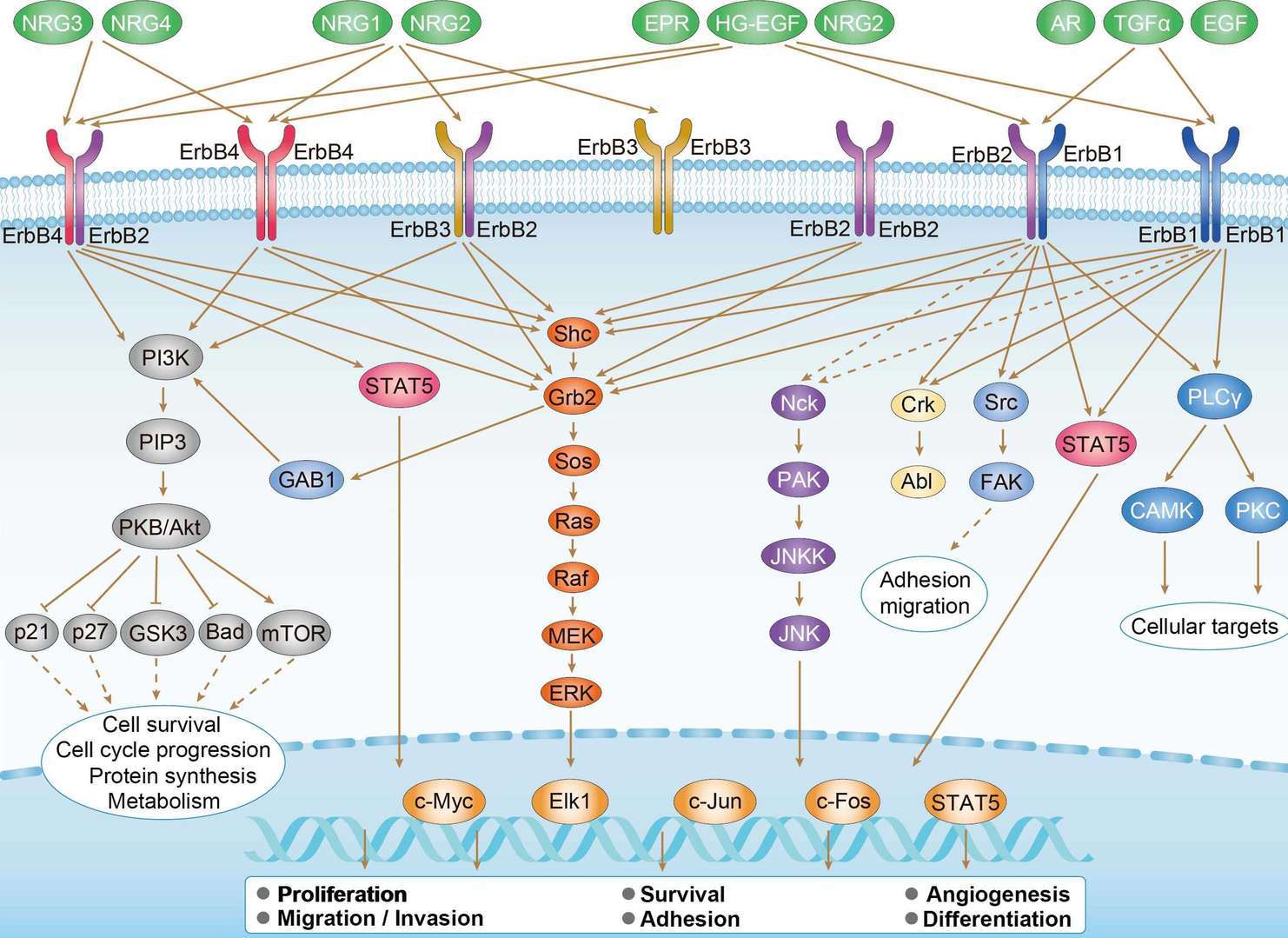 ErbB Signaling Pathway
ErbB Signaling Pathway

